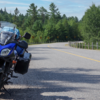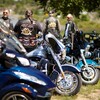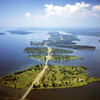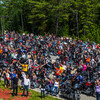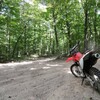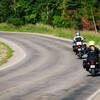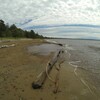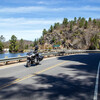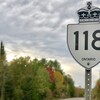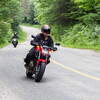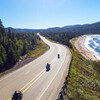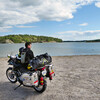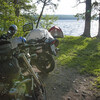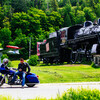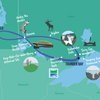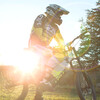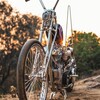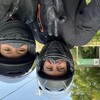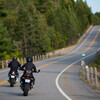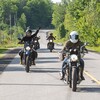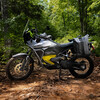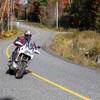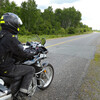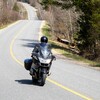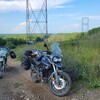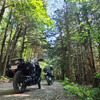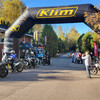
*&^*! Deer!
Bambi. So cute and adorable and yet so dangerous. I've had a few experiences with Bambi. I've hit 3 and one was while riding my motorcycle. I was riding on a country road and without any warning a deer jumped out in front of me. It came out from behind some trees that were close to the edge of the road. I did not see it coming and did not get a chance to brake. I woke up in the ditch, spitting gravel, my visor ripped off my helmet.
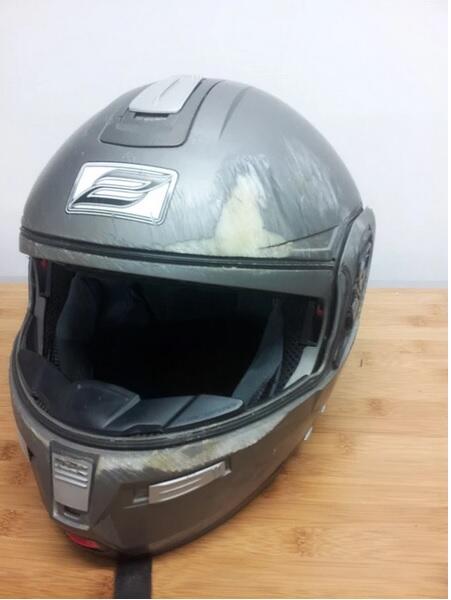
I don't know how long I was out for. My bike was lying in the ditch beside me. Luckily someone was driving by and stopped to help me to my feet. My body was beaten and bruised, but nothing broken. A miracle really. I am convinced that my full riding gear (which was shredded) saved me a lot of pain and major injuries. Wear good gear! I only needed a few stitches on my hand. Why just my hand? It was a hot day and I decided to wear my light dirt bike gloves. BTW, the deer did not survive.
things to know about deer when you're riding

Deer are very unpredictable. If you see one on the side of the road, do not assume they are waiting for you to pass. They may still decide to run across the road in front of you. See my experience with this below.
Another reason a deer may jump in front of you, is because they are being chased by a wolf or coyote. Doe’s are often chased by bucks. And no, they won’t look both ways before crossing.
The peak time when deer are travelling is in October, November, and December, during the annual rut (breeding) season. They usually travel in groups, so if you see one ahead crossing the road, slow down and look for others. They usually travel at dusk and dawn, so be extra careful then.
Here are a few more tips to help you avoid hitting a deer.
1. Scan the shoulders of the road.
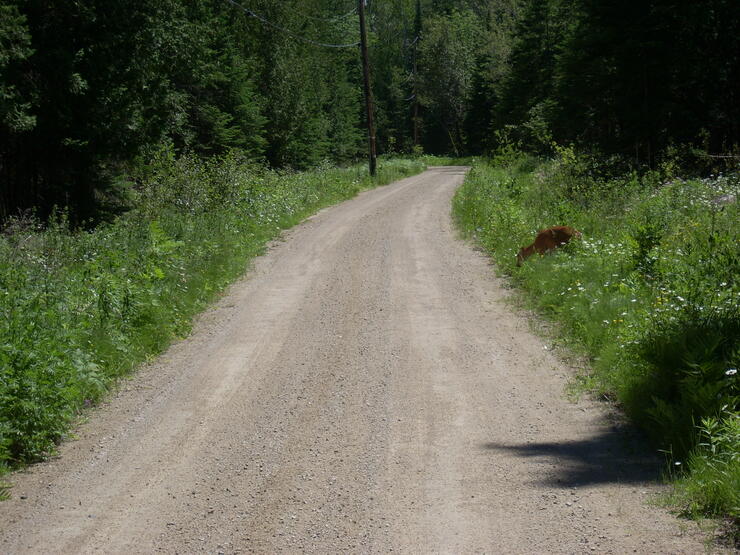
This is especially important where trees and tall weeds are close to the edge.
2. Watch for deer crossing signs.
These signs are posted where deer are known to cross the road.
3. Ride in the centre of the road.
This gives you a better chance of deer avoidance from either side. If one side has trees close to it and a wide open field on the other, I will ride closer to side of the road that the field is on. If a deer jumps out of the bush, you have more room to stop or manoeuvre around it.
4. Deer whistles do not work.
Do not depend on them for deer avoidance. A 2007 study from the University of Georgia also found deer whistles are "likely not effective in altering deer behaviour along roadways to prevent collisions.”
5. Cover your front brake.
When riding in a known or questionable deer area, my right hand is over the front brake handle and ready.
6. Refrain from riding at night if possible.
If you do, ride at a comfortable speed (slower than during the day) and scan the shoulders of the road. If a deer is standing on the shoulder, hopefully your headlight will reflect off a deer’s eyes and you will see their eyes light up.
One time, a longer day than anticipated caught me having to ride the last hour home in the dark. I was riding at a safe speed, covering my front brake while scanning the shoulders. I noticed a deer standing on the edge of the road on the left. I slowed as I approached, but I figured if I could see it, he would surely see my bright lights and wait until I had passed. No, of course not. As I got closer to him, he made a suicide decision and jumped out in front of me! I could hear his hoofs scraping the pavement trying to get traction while I’m frantically trying to squeeze the brake lever to the bar. I realize that this line I’m on, I’m going to hit him, so I aim for the right shoulder, trying desperately to avoid a collision. I manage to stop on the gravel (thank you ABS) and the deer jumps into the darkness right in front of me. *&^*! Deer!
7. If you approach a deer on the side of the road, do NOT honk your horn!
This startles them and they could run right into you. Yes, I did this. I honked the horn and it ran across the road in front of me. Then another that was hiding in the bush, jumped out onto the road too. So now I had two deer zig-zagging on the road in front of me! Just slow down until you pass them.
8. This is for the LOUD PIPES SAVES LIVES crew, the LOUDER your bike the MORE chance you have of hitting a deer!
Deer don't run when they hear your loud bike coming. They freeze. They stay stationary hoping that whatever is making that noise does not see them. As you get closer, and the noise gets louder, they will get startled and jump! You would think back into the bush, correct? Maybe yes, maybe no. Deer are WAY too unpredictable! So Quiet Pipes Save Lives (or at least, a lot of pain).
Ride Safe.
Recommended Articles

Bucket List Motorcycling in Ontario, Canada 2025

Ontario's Best Twisties: Five Roads to Get Your Lean On

The Big Belly Tour—A Complete List of Ontario's BBQ Joints
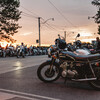
It's Bike Night in Ontario 2024

Ontario's Top Twisties
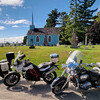
Have You Ridden Canada's OG Highway? Here's Why Every Rider Needs to Hit Up Historic Highway 2
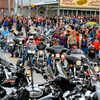
23 Amazing Photos That Prove PD13 Is Still The Best Motorcycle Event Ever
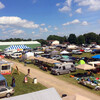
Motorcycle Swap Meets in Ontario—The Complete List for 2025

And a Vespa shall lead them all...
